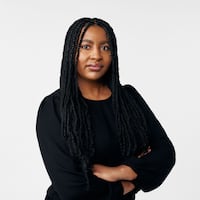One of the most revered and fearsome activists of the civil rights movement was less than halfway through college when she made it clear she would take the American South by storm.
Diane Nash was barely 21 years old when she first joined the movement.
A Chicago native, she was born into a middle-class Catholic family, according to the Student Nonviolent Coordinating Committee digital gateway. She began her college education at Howard University in Washington, D.C., before transferring in 1959 to Fisk University in Nashville, Tenn.
Nash said that was when she first saw the ugly underbelly of the South: segregation, according to SNCC. She hadn’t fully understood it until that point.
» MORE: Full coverage of Black History Month
“I started feeling very confined and really resented it,” she said. “Every time I obeyed a segregation rule, I felt like I was somehow agreeing I was too inferior to go through the front door or to use the facility that the ordinary public would use.”
The Fisk student sought a way to combat segregation, which led her to the doorstep of the nearby church where Rev. James Lawson taught nonviolent, non-retaliatory protest methods. Lawson had been cultivating a group of activists that included James Bevel, John Lewis and Bernard Lafayette. Nash became a believer.
Lafayette, now a Distinguished Scholar-in-Residence at the Candler School of Theology at Emory University, was a 20-year-old student at American Baptist Theological Seminary when he met Nash. He said she quickly emerged as a leader and became the media spokesperson of Lawson’s group.
»RELATED: A generation after Diane Nash comes Mari Copeny
Credit: Henry Burroughs
Credit: Henry Burroughs
“She was always very calm, clear and articulate,” Lafayette said, adding that Nash cleverly navigated around the egos of the male-dominated group. “She didn’t try to dominate anything. But she really impressed us with her leadership abilities. One of the things that she was very good at was managing conflict within the group.”
Starting in 1960, Nash took on the fight of desegregating lunch counters in Nashville.
In a statement, Nash said she “helped lead nearly 4,000 people on a march to Nashville’s City Hall to confront the mayor about the escalating violence against protesters.”
“During that confrontation, Nash provocatively asked the mayor on the steps of City Hall, ‘Do you feel it is wrong to discriminate against a person solely on the basis of their race or color?’”
He answered that he did.
Within weeks, Nashville became the first southern city to desegregate lunch counters, according to Nash’s statement.
Along with Ruby Doris Smith, Charles Sherrod and Charles Jones, she founded the Student Nonviolent Coordinating Committee in 1960 and continued her work desegregating Southern lunch counters.
In February 1961, the small group sat at a counter in Rock Hill, S.C., to support nine students who had been arrested.
»RELATED: The lost legacy of Claudette Colvin
Nash and SNCC, like the “Rock Hill Nine,” refused bail when they were arrested.
“The SNCC activists believed that paying fines would only support the wrongness and injustice of their arrests,” the organization’s digital gateway said.
The intensity of Nash’s work increased when she became involved in the “Freedom Rides.”
The United States Supreme Court had ruled segregation of interstate travel violated the Interstate Commerce Act.
But the ruling was largely ignored.
Tom Gaither, then leader of the Congress of Racial Equality (CORE), proposed testing compliance with the court decision by organizing African Americans to ride a Greyhound bus from Washington, D.C. to New Orleans.
The bus carrying the “Freedom Riders” did not make it to New Orleans. On May 14, three days before they were due to reach their final destination, the Freedom Riders were met by a mob of Klansmen in Anniston, Ala.
»RELATED: Angela Davis: Activist, scholar still challenging status quo
The KKK firebombed the bus and slashed its tires. Klansmen held the doors closed to keep the Freedom Riders inside while the bus burned. But they escaped through an open back window just before the bus exploded.
The world was watching, and Nash and other activists decided the rides had to go on.
“The [Nashville] students have decided that we can’t let violence overcome,” Nash said. “We are coming into Birmingham to continue the freedom ride.”
Nash said she and 10 other students wrote their wills the night before they boarded a bus headed to Birmingham.
“It was clear to me that, if we allowed the Freedom Ride to stop at that point, just after so much violence had been inflicted, the message would have been sent that all you have to do to stop a nonviolent campaign is inflict massive violence,” Nash said in the 2010 documentary “Freedom Riders.”
»RELATED: Greensboro sit-in: A movement begins
The violence against Freedom Riders would continue, and Nash and hundreds of others would be arrested before “white” and “colored” signs were finally removed from bus and train terminals.
After the Freedom Rides, Nash dropped out of school to become a full-time organizer for the Southern Christian Leadership Conference, headed by the Rev. Martin Luther King Jr. She and Bevel, then her husband, were both awarded the Rosa Parks Award from King in 1965.
Throughout February, we’ll spotlight a different African American pioneer in the Living section every day except Fridays. The stories will run in the Metro section on that day.
Go to https://www.ajc.com/black-history-month/ for more subscriber exclusives on people, places and organizations that have changed the world and to see videos and listen to Spotify playlists on featured African American pioneers.
About the Author
Keep Reading
The Latest
Featured




